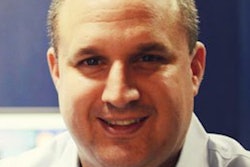Dear AuntMinnie Member,
Radiologists are being told they need to communicate more directly with patients, but that's easier said than done. A new study published June 20 in Radiology explores some of the reasons why patient communication is so hard for radiologists.
A research group sent a survey to radiologists asking them if they thought communicating with patients was important -- of course, a strong majority did. But things got more complicated when they were asked about some of the barriers impeding radiologist-patient communication.
Not surprisingly, the main issue was money -- more specifically, how to compensate radiologists for an activity that takes time away from their economic bread and butter: interpreting images. The researchers believe their findings expose a disconnect between what radiologists are being told to do and what they are realistically capable of doing. Read more by clicking here for a story in our Imaging Leaders Community.
While you're in the community, be sure to check out a fascinating new article by Dr. Barry Julius of RadsResident.com on the challenges of managing radiologists of different generations. From adapting to a PACS upgrade to handling vacation and salary issues, he's found that baby boomers, Generation Xers, and millennials all react in very different ways.
Siegel on AI
One of the major thought leaders in imaging informatics is Dr. Eliot Siegel. In addition to being one of the pioneers in PACS implementation, he's also closely following the development of artificial intelligence (AI). While Dr. Siegel sees AI as being one of the most exciting areas of radiology, he also believes that much could be done to improve the AI algorithms being developed for radiologists. Read his advice by clicking here, or visit our Artificial Intelligence Community at ai.auntminnie.com.
3D holography
By now you've heard a lot about 3D printing, including some of the many ways that it's helping to improve the quality of education, training, and even clinical practice. But there's another 3D technology on the horizon that could ultimately be even more useful: holographic data visualization. Learn what it is and how it could be used in the future by clicking here, or visit our Advanced Visualization Community at av.auntminnie.com.
Elastography of carotid plaque
Finally, researchers in China are reporting on a shear-wave elastography method they used to measure the stiffness of carotid artery plaque. They believe the method could be a good way to predict which patients will go on to have events such as strokes or transient ischemic attacks. Read more by clicking here, or visit our Ultrasound Community at ultrasound.auntminnie.com.



















